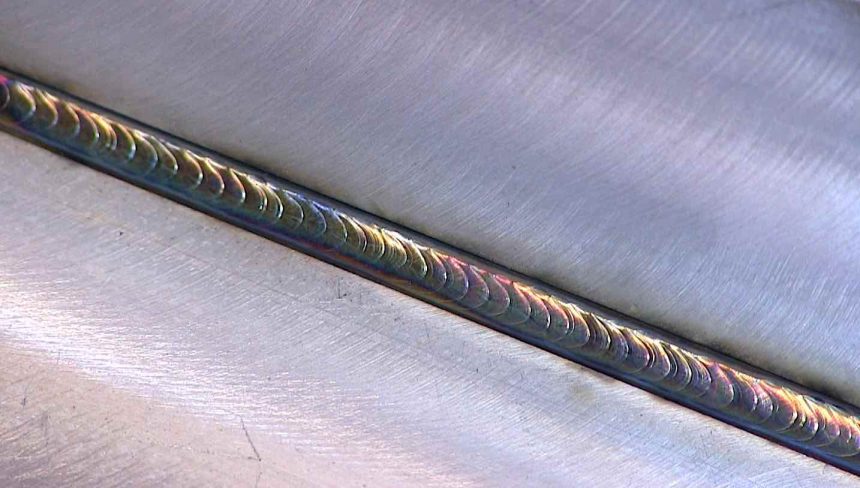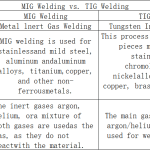Welding thin sheet metal presents its challenges as it requires achieving proper fusion while avoiding distortion and burn through. The crucial skill lies in effectively managing heat distribution across the sheet metal to prevent flaws. This guide outlines various techniques to help you achieve optimal results when welding thin sheet metal.
Tips for Welding Sheet Metal With MIG or TIG
Welding Town
Welding Process
Selecting a welding process that offers heat control is essential. MIG (Metal Inert Gas) and TIG (Tungsten Inert Gas) are the most suitable processes for this purpose. While it is possible to perform stick welding on thin sheet metal, it becomes more challenging to regulate the heat, resulting in messier outcomes that are difficult to master.
Some welding machines also offer pulsed MIG or TIG capabilities. Pulse welding, an advanced variation of MIG and TIG, produces clean welds and helps prevent welding defects. This technique involves fluctuating the current from low to high instead of a constant flow. The resulting weld bead displays a smooth ripple, facilitates faster travel speed, and reduces heat input. By minimizing heat input, the risk of distortion can be diminished.
Skip Welding Technique
When working with thin sheet metal, avoid running a single bead continuously across the joint, as this leads to excessive heat buildup. Instead, execute a series of short welds at different points along the metal, eventually joining them together. Allow the metal to cool for a brief moment between welds to aid heat dissipation.
Always travel the torch in a straight line at the highest speed possible while ensuring adequate penetration. Avoid weaving the torch or moving it too slowly, as this would cause heat accumulation. Opting to push the torch instead of pulling it also directs the gun toward the cooler edge of the weld puddle, preventing excessive heat buildup. Keep the arc length and voltage as low as feasible, and only increase the amperage slightly if deeper penetration is required.
Tack Welding Technique
When butt welding thin sheet metal, achieving adequate penetration without burning holes or distorting the metal requires precise control. Tack welding, which involves creating a series of small tack welds, is a commonly employed method to maintain low heat and minimize the risk of distortion.
Ensure that the two metal pieces are closely butted together, typically with a 1mm gap to avoid burn-through. Create a small tack weld at the joint and repeat the process with multiple tack welds, slightly overlapping them to cover the entire joint. Allow a half-second interval between welds for the metal to cool. The longer the interval, the lower the likelihood of burn-through. To prevent heat buildup, weld different sections at a time.
If excessive metal buildup occurs, avoid grinding it down until the welding process is completed to prevent excessive removal of metal, which may lead to burn-through.
MIG Wire
Utilize the smallest wire diameter possible while ensuring adequate deposition. Typically, a 0.023 wire diameter should suffice unless welding 18-gauge or thicker materials, in which case a 0.030 wire might be necessary. Smaller wire diameters transfer less heat to the metal due to their lower melting point.
TIG Electrode
Employ an electrode with a diameter of less than ⅛ inch. Never use an electrode thicker than the metal being welded. Smaller electrodes perform better at lower amperages and help prevent burn-through. Ensure the electrode is ground to a fine point to maintain a tight arc.
Backing Bars
To expedite heat dissipation, secure a backing bar to the work metal using clamps. Copper or aluminum backing bars are commonly used as they draw heat away from the work metal, preventing warping or burn-through. Since copper has a higher melting point than steel, the weld does not stick to the copper, allowing for easy removal after welding is completed. Ensure the backing bar is tightly clamped against the work metal and maximizes contact for efficient heat transfer.
Shielding Gas
Opt for a high-argon-based shielding gas, such as a mixture of 75% argon and 25% CO2. This is preferable over pure CO2 as argon generates less heat. When TIG welding aluminum or MIG welding aluminum, 100% argon shielding gas is required.
Lastly, the most effective approach is continuous practice. Mastering the art of welding thin sheet metal without distortion takes time and practice. By following these tips and experimenting, you will soon achieve excellent results.







![12 Different Types of Welding Processes [The Definitive Guide] 11 12 Different Types of Welding Processes [The Definitive Guide]](https://www.021208.com/wp-content/uploads/2025/01/12-Different-Types-of-Welding-Processes-The-Definitive-Guide-150x150.jpg)



